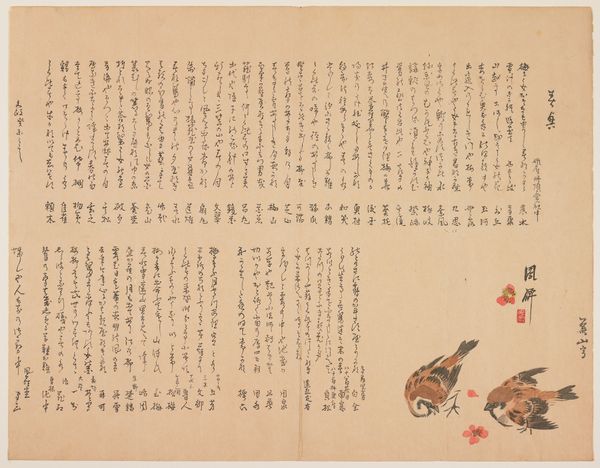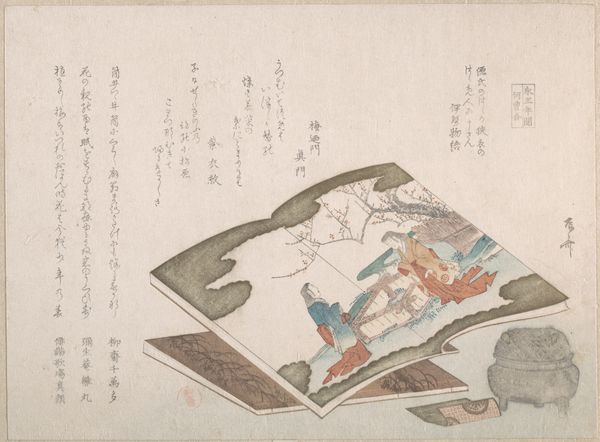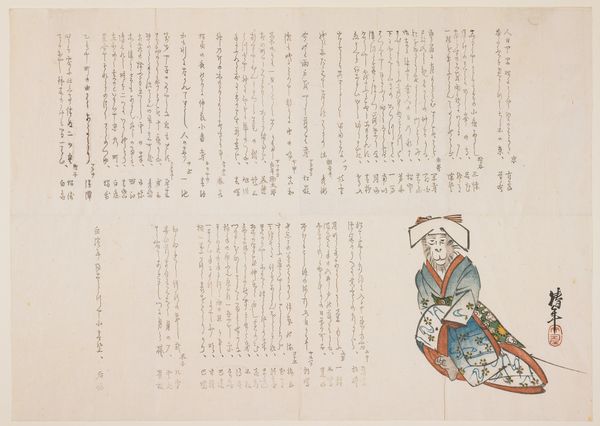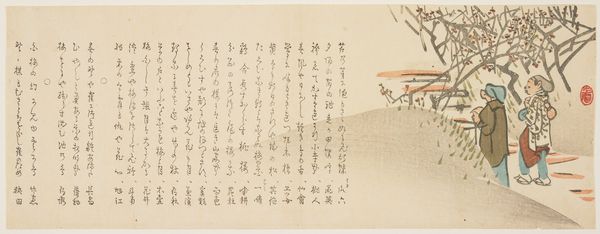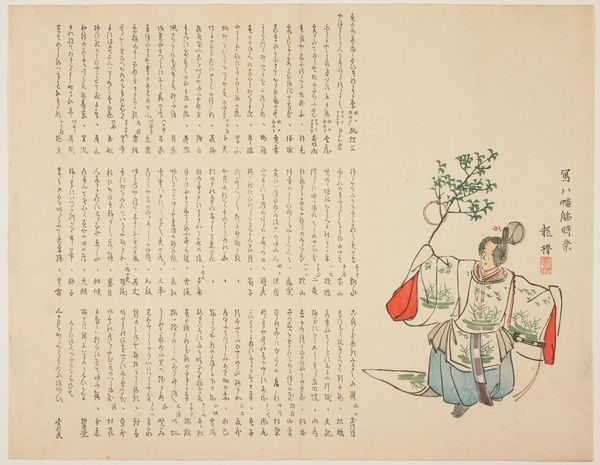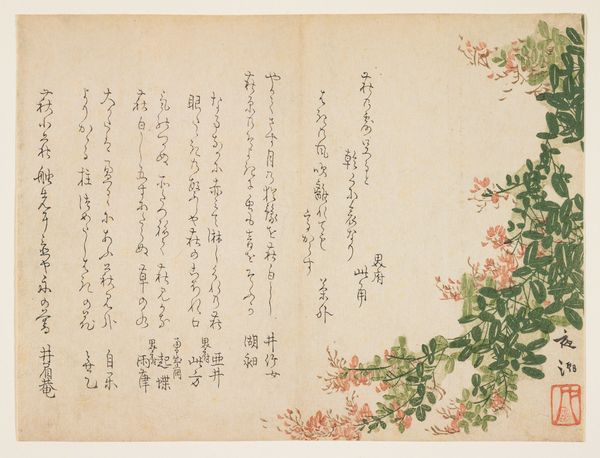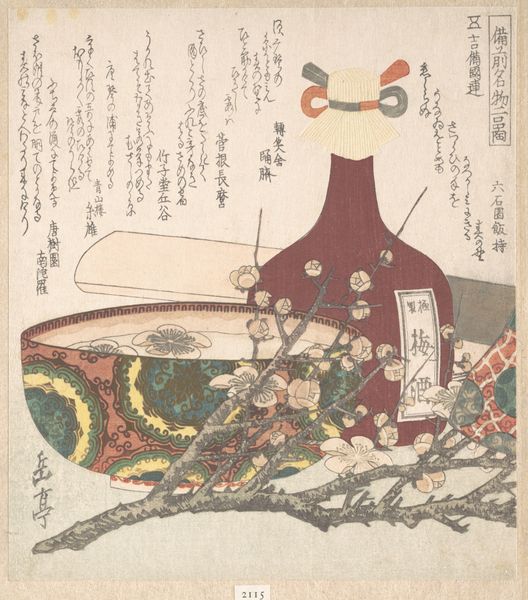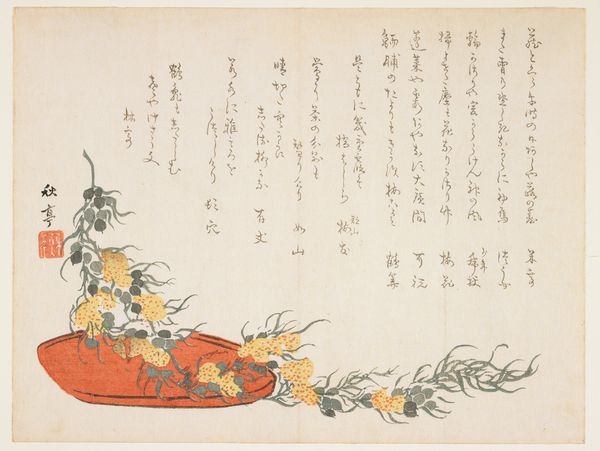
print, paper, watercolor, ink, woodblock-print, wood
#
aged paper
#
toned paper
# print
#
asian-art
#
landscape
#
ukiyo-e
#
paper
#
watercolor
#
ink
#
woodblock-print
#
wood
#
botanical art
Dimensions: 15 x 18 3/4 in. (38.1 x 47.6 cm) (image, sheet)
Copyright: Public Domain
Curator: This is "(Canopy for viewing cherry blossoms)" by Nakamura Nagaharu, made around 1820. It’s a Japanese woodblock print, or ukiyo-e, rendered with ink and watercolor on paper. Editor: The print’s aged tones immediately convey a sense of the ephemeral – appropriate, considering the subject matter. It's subtle, yet those diagonal bands of muted color feel surprisingly contemporary. Curator: Ukiyo-e, "pictures of the floating world," often captured fleeting moments of beauty, acting as meditations on impermanence. Here, the cherry blossoms symbolize precisely that – a burst of fragile beauty. Editor: And their historical association with samurai culture…the cherry blossom embodying the brief but brilliant life. It seems impossible to separate such cultural associations from a work like this. The choice of cherry blossoms in this instance becomes political in a sense, highlighting a social link with the past. Curator: Indeed. Blossoms as cultural memory, distilled into a single image. The inclusion of calligraphy reinforces this idea, creating a layered visual experience with multiple points of entry. We must remember calligraphy has an independent artistic history too. Editor: Right. And the composition! Notice the positioning of the tree, partially obscuring our view and creating this wonderful sense of anticipation, like looking through a window or that ‘canopy’ evoked in the title, suggesting both invitation and restricted access. To whom does this view belong? Curator: Intriguing to consider who had access, yes. These prints were popular amongst the merchant class. This art reflects their aspirations and evolving relationship with societal values. The layers of symbolism run deep. Editor: Looking closer, I notice the wood grain becomes visible through the colored areas, reminding us of the printing process. The intentional revelation of process disrupts any easy reading of the image. The artist appears self-aware and calls the historical reading to the fore. Curator: Precisely, drawing our attention not just to the image, but to its construction and circulation. These works speak of longing and identity. I agree about the contemporary element; something still strikes a chord today. Editor: Definitely something universal. It is lovely how historical contexts shift when placed in a new surrounding. Curator: A bloom eternal as the picture reminds. Thank you. Editor: Indeed. The dialogue between form and historical intent offers compelling narratives. Thanks!
Comments
No comments
Be the first to comment and join the conversation on the ultimate creative platform.
